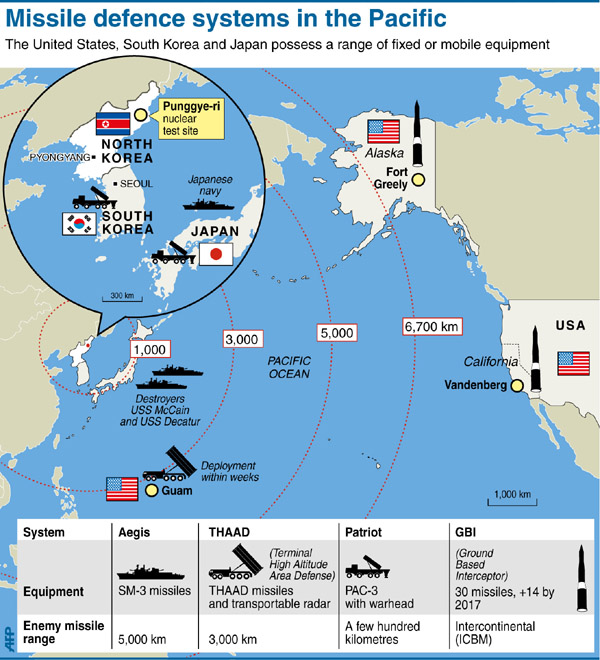
Don’t want to steal Shawn’s thunder as he is working up an article on THAAD, but this is a nice little graphic showing the defense of the area: U.S. can Intercept North Korean ICBMs with 36 Deployed Interceptors
We do have THAADs deployed in Hawaii, Guam, South Korea and Alaska (the map does not show them in Hawaii, South Korea nor Alaska). The U.S. Army has five THAAD batteries that are part of the 11th Air Defense Artillery Brigade.
There are only 4 GBI’s (ground based interceptors) in Vandenberg. There is some question over the ability of a THAAD to intercept an ICBM (vice an IRBM), but we will let Shawn discuss that. Not sure how many Aegis systems we have in the area, but as they are sea based, it could several and they can move. Again, not sure about their ability to intercept an ICBM (Intercontinental Ballistic Missile vice the much smaller IRBM, Intermediate Range Ballistic Missile). Korea is currently threatening Guam with four IRBMs. They most likely do not yet have a nuclear warhead with a working ballistic vehicle (BV) connected to an ICBM, but may be less than a year away from this capability.

The graphic is missing our “pre-boost-phase” defense: Navy attack subs off the coast with Tomahawks. The Nork ICBM requires lengthy preflight liquid fueling on an exposed above-ground launch pad.
By now, I’m sure the Navy keeps at least a couple SSN off the coast at all times.